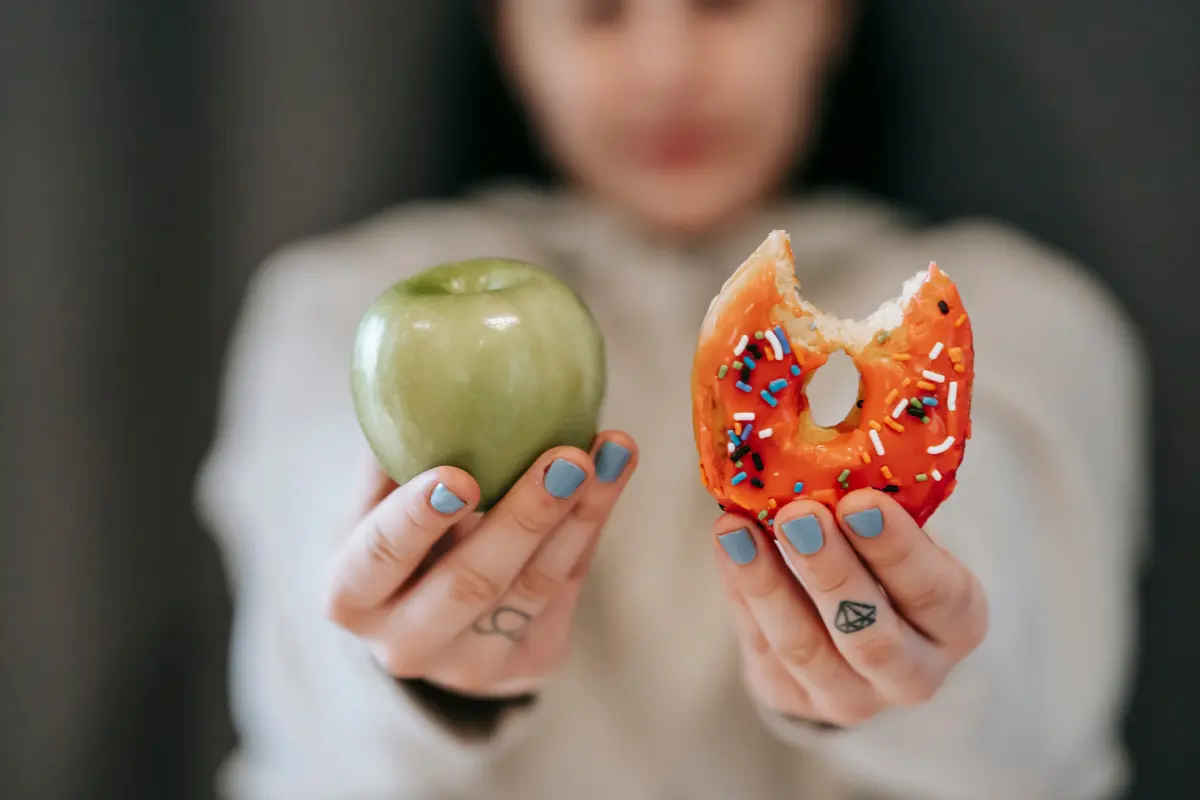
You can be “strong like bull”. You can keep crushing PRs. You can add amazing strength gains while maintaining a lean look… and macros for bulking can get you there!
If you want to hop the fence onto the CrossFit Games floor and blend in with the other shoulder boulders and seam-busting quads to successfully avoid security, this article is for you. We are covering what and how much you need to eat so you can reach your muscle-building goals. Let’s dig into Part 2 of our “Macros For Your Goals” Series.
RELATED: Macros For Cutting: Macros For Your Goals Part 1
How Does Bulking Work?
“Bulking” is a quick way of describing a common goal in the workout world. Bulking means eating in a calorie surplus with a specific goal in mind. Most often, this goal is to gain muscle while limiting fat accumulation.
What is a calorie surplus?
Simply put, eating in a calorie surplus means consuming more calories than you burn. How much more you eat will determine how quickly you gain weight (muscle and fat), so it’s important to monitor that number.
Advertisement
RELATED: Bulk, Cut, Reverse or Maintain?
RELATED: WAG Macro + Calorie Calculator
Who is Bulking Good For?
Should you bulk? That depends on a lot of things.
Your goals, of course, as well as your current starting point, what you’ve been doing nutritionally/physically the last few months and other factors will dictate what type of approach you should take.
Bulking is best for those who can benefit from any muscle or weight gain like:
Advertisement
- Someone looking to go up a weight class for their sport
- Someone who has been cutting for an extended amount of time
- Someone looking to build strength and muscle
Bulking is likely NOT the best approach for someone who needs to lose weight.
Calories are the most important metric to track if you are looking to gain weight. But, if you are looking to build lean muscle and minimize body fat changes while doing so, your macro numbers are just as important.
Calculating Bulking Macros
Calorie intake should be about 10-15% above your maintenance number; this means eating 110-115% of the calories you burn each day. If you go higher than that and gain weight too fast, it’s unlikely your body will be able to build the muscle to keep up and instead will be forced to store body fat.
Feeling a little confused and want some support here? A 1:1 coach can help you find the calorie intake that makes the most sense for your body, training and goals.
Once that calorie number is set well, you’ll need to calculate your macros to have more control over your body composition (muscle mass vs body fat). In other words: Calories generally determine how much you weigh; macros generally determine how you look and feel at that weight.
Advertisement
Which version of The Rock do you want to be? The one that counts macros (left) or the one that simply counts calories (right)?

How Much Protein Do You Need When Bulking?
Just like when cutting, protein is crucial to your bulk. If you want to see the rewards of training hard and eating to grow, you need to make sure you’re growing the muscles! To achieve this goal, you need protein.
Protein is the macronutrient responsible for growing and repairing muscle tissue [1]. At WAG, we recommend a range of protein between 0.7 and 1.3 grams of protein per pound of body weight for all athletes.
For someone who is bulking to gain muscle, we recommend eating towards the higher end of that protein range and pairing that with strength training.
Advertisement
Chicken tenders and Greek yogurt deserve a spot in your fridge.
RELATED: Easy Ways to Add Protein to Your Day
How Many Fats Do You Need During A Bulk?
Pasta. Cheese. Peanut Butter. Bread. A Chocolate Chunk Pizookie from BJ’s Brewhouse that comes out of the oven still gooey in the center and topped with two scoops of vanilla bean ice cream and it’s free because it’s your birthday…
Yes, you’ll be happy to hear that carbs and fats will play a role in your bulk… side note: balance the fruits/veggies with the occasional pizookie.

Advertisement
Let’s start with dietary fat during a cut.
Fats are responsible for a lot of your bodily functions. They are necessary for transporting nutrients around the body and in and out of cells. We recommend fats make up 25-35% of your daily calories. This number can be adjusted based on preference and feel. If you like fatty foods, lean towards the high end. If you’re sluggish during your workouts, you may shift towards the low end and save room for more carbs.
WAG’s favorite fat sources are often nuts/nut butters, avocados and fatty fish.
RELATED: The Types of Fats you Should be Eating
Carbohydrates During a Cut
Carbs deserve a frame above the fireplace right next to protein when it comes to bulking. Carbs are your body’s best source of energy and keep all of the necessary systems of your body functioning [2]. Carbs also fuel all of the “arguably necessary” bodily functions like bicep curls and glute bridges as well.
Advertisement
If you want to build lean muscle during your bulk, you need to lift some heavy weights. If you want to lift some heavy weights, you need to give your muscles the breads, oats, fruits and veggies it needs for fuel.
Carbs make up the remainder of your daily calories after accounting for calories from protein and fats. Again, you can play around with the ratio of your calories coming from carbs and fats until you find what works well for you.
Friends don’t let friends demonize carbs.
How to Adjust Macros During A Bulk
Initially calculating your target macros and then adjusting them along the way are the trickiest part of a successful bulk, so hiring a coach can relieve a lot of that stress. But, if you need a starter, try out our Macro Calculator Cheat Sheet.
As you work through your bulking phase, you’ll need to adapt your macros as your body changes (or doesn’t change).
Advertisement
Your protein will adjust using the multiplier (0.7-1.3 g/lb of body weight) mentioned above. Your carbs and fats will need a little more intuitive thinking.
You’ll need to adjust your carbs/fats if you:
- Need more calories to gain weight
- Need fewer calories to slow down body fat gains
- Need more carbs to help with sluggish workouts
- Find that you prefer one macro over the other and need to reallocate your calories
What to Expect During a Bulking Phase
Bulking sounds like an easy job: eating more sounds doable, right? It can, however, have its challenges.
For most, the struggles will come from trying to get all the calories in or how you feel once you make it happen. In other words, just like you may need to ignore some hunger signals when you’re cutting, you may need to ignore fullness signals when bulking.
How to Deal with Low Hunger During a Cut
It is all about volume!
Advertisement
If you find that you’re struggling to consume all your macros, you need to begin filling your calories with lower-volume foods. What do we mean?
If you needed 27g of carbs, you could eat ½ cup of oats OR 4.5 cups of broccoli. Which do you think will fill you up more? Food quality and getting in whole foods is still important. Vitamins and minerals are important for immune health, recovery and more.
But, when you’re working with high-calorie counts (carbs especially) you may need to add more quick digesting, lower volume options.
This chart will help!

Advertisement
Here are a few more tips:
- Prep snacks that are easy to grab throughout the day. (Pro tip: Put them on your desk or within eyesight so you remember to eat them.)
- Smoothies are a great way to get in lots of calories (and blended-up veggies!) without feeling physically full. Prep your smoothies in ice cube trays or in pre-measured freezer bags that are quick and easy to throw in the blender.
- Minimally processed protein bars are lower volume (win) and full of calories (another win).
- Raw veggies are tougher to digest (and take up more room in your stomach) than cooked veggies. Cooking also helps break down protein and fiber in your foods and make them easier to digest.
- Plan your meals ahead of time and keep macros relatively evenly spread throughout the day.
- Drink full calorie Gatorade, Powerade, Vitamin Water and other electrolyte beverages. Lower-calorie or full-calorie fruit juices and chocolate milk can also help you bang out carbs without filling up.
- Eat smaller meals more often vs a few big meals.
- Keep tabs on what foods work well for you and what leaves you feeling less than your (slightly fuller than usual) best. Repeat what works, leave what doesn’t.
How to Measure Progress While Bulking
The scale is an important metric to help you determine if you’re gaining weight or not. However, if you’ve got bigger goals, you’ll need to use some more metrics to track your progress.
Other (more useful) measurements are:
- PRs: Strength gains in the gym (lifting heavier)
- Body composition scanners: InBody or Dexa will show muscle mass numbers
- Measurements: have a buddy wrap a tape measure around your bicep ;)
- Photos: can you see muscle growth?
If you’re not seeing results, you’ll need to adjust your nutrition as mentioned above OR adjust your training to promote muscle growth.
How Does Training Impact Your Bulk?
Training is another key part of a successful bulk.
Advertisement
It would be great if you could eat the food and it would go straight to your biceps, but such is life; some exercise is necessary.
We recommend incorporating a strength training routine into your exercise if it isn’t there already. Bulking could be counterproductive to your goals if you don’t stimulate muscle growth. Without telling your body to fuel/repair your muscles through intentional exercise, those extra calories will simply be stored as body fat. No bueno.
Do your best to tell your body that the extra calories should be used for lean muscle mass and not hibernation preparation.
RELATED: Macros for Muscle Gain
Advertisement
What to Do After a Bulk
What do you do when you reach your target weight? Well, you’ve got three directions you can go: up (keep bulking), down (cut) or straight ahead (maintenance). This article is a great starting place to help you figure it out.
In many cases, or if you’re unsure of your next goal, you might work back to maintenance calories. This means slowly decreasing calories (by 100-200) every couple of weeks until weight gain has stopped. Go slowly as your maintenance calories is now higher than it was when you started! You’re bigger and stronger now!
Working with a WAG Coach is a great way to achieve results without all the number crunching and avoiding a bulk that would make Joey Chestnut blush (you don’t need that many hotdogs). Our app, Seismic, will help you log and track all of your foods and drinks and let you communicate easily with your coach for check-ins and adjustments.
Understanding how to bulk is great knowledge to have when that wonderful day comes and you decide you want to be the stunt double for The Mountain. More food! Just don’t go too crazy.
References:
- Philips, S., Chevalier, S., & Leidy, H. (2016). Protein “requirements” beyond the RDA: implications for optimizing health. Appl Physiol Nutr Metab, 41(5), 565-72. doi: 10.1139/apnm-2015-0550.
- Rodriguez, D., & Kennedy, K. R. (2019, April 29). Carbohydrates: Your Body’s Most Important Source of Fuel. EverydayHealth.Com. https://www.everydayhealth.com/diet-nutrition/101/nutrition-basics/what-about-carbohydrates.aspx
Bo Buser
Get a WAG Coach
Working Against Gravity has led the macro tracking and health space for over a decade. Our team doesn’t just understand the science of nutrition—we’ve spent years mastering the art of tailoring it to fit your life. That means no cookie-cutter plans, just real strategies that have worked for over 30,000 people.
Choose from our membership options and start working with an expert 1-on-1 coach today.



